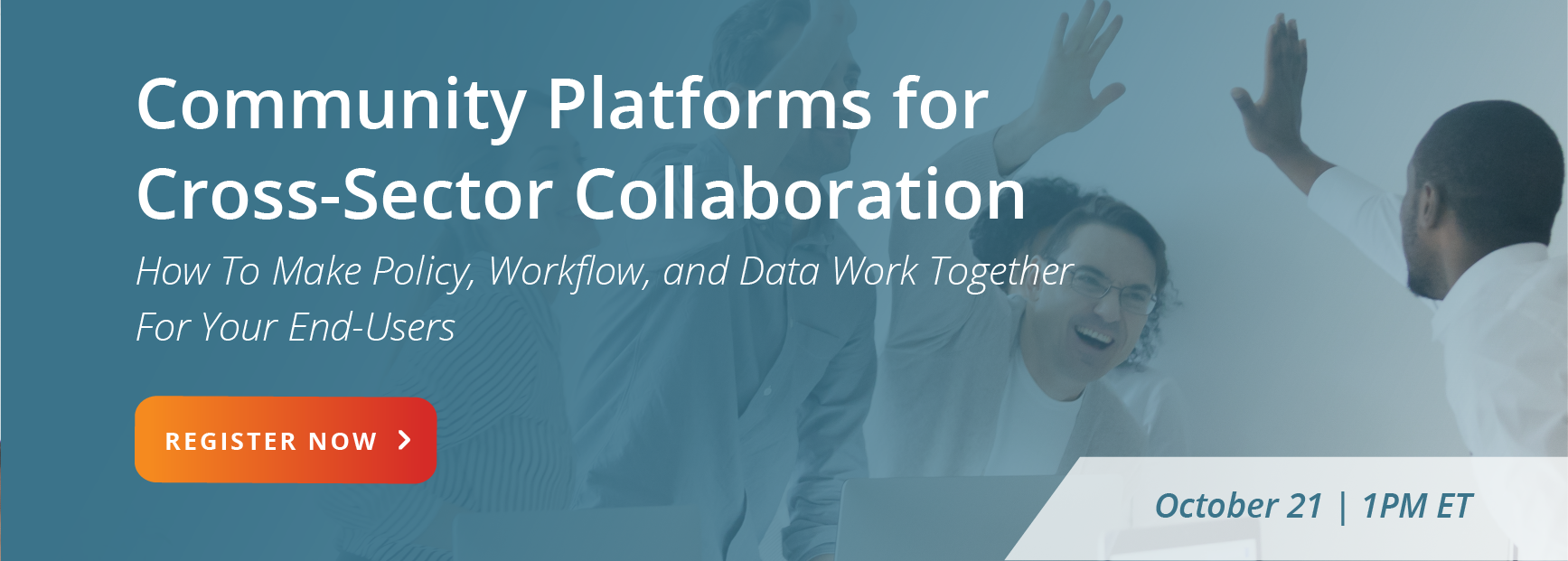What will the decade ahead of us hold in store for efforts to address the social determinants of health? If it is anything like 2020, we are in for a roller coaster. It’s imperative that health and social care leaders prepare for ten years that are sure to be unlike anything we have seen before.
In recent years, if you have made progress with social interventions, your success has often been measured by metrics such as how many shared care plans your team could create or how many health and social care referrals were initiated or completed. As time went on, many of these interventions achieved a kind of stability in their operations and procedures - then COVID-19 happened.
For Me, Community Information Exchange is Personal
Late last year, someone in my network called me late at night and said, ‘Hey, I need your help.’ It turned out that they were experiencing an urgent family health and safety issue. We’re a close-knit community, and so we started over the next couple of months to work through that family’s needs for medical care, social services, and behavioral health support. And this episode reinforced to me that all of these challenges are just so intertwined.
How do we take a patient with so many different challenges and help them set priorities and a plan of care that gets a different outcome? If everything’s a priority, nothing’s a priority. How does a care team composed of professionals from many organizations identify where they can most quickly move the needle in this person’s care? Many community health programs will focus on homelessness or employment or food insecurity, believing that if they tackle that one issue, all the other issues are related, and they’ll be able to address many of them over time. But it starts by setting meaningful goals with the individual and then trying to work that issue to a different outcome.
Succeeding With CIE In 2021 And Beyond
In case it’s not clear by now: What we think worked in the previous decade for SDOH will not work in the 2020s because our understanding of how to engage communities in social interventions has scaled up dramatically. It’s not enough to close the loop on a referral or even develop a shared care plan. So what will work?
For starters, every care team must incorporate a whole person care perspective into care planning. Referrals, care coordination, and data exchange are all meaningful inputs into this process. But to improve access to quality care, delivery of social services, and decrease the costs of care, we need to do a better job of actually solving the complex health and social needs that so many individuals share. Advancing this vision for community information exchange is going to require all hands on deck in your community:
- Healthcare providers at hospitals, FQHCs, and other clinical practices need to be connected - and the data in their EHR systems need to be accessible to these interventions.
- Health insurers - especially Medicaid managed care organizations - need to contribute data, financial resources, and expertise to these efforts.
- Social services organizations have the most to gain in these efforts, and should be engaged as valuable partners with a hard-won perspective on the community's needs.
- 211 networks, of which there are hundreds in the United States, also stand to gain ground in this new era, as the most successful community information exchange efforts will actually reimburse 211s handsomely for their data and support.
- Health information exchange organizations across America currently exchange at least some form of health data for more than 95% of the US population - and this data can play a critical role in any social intervention.
- Government leaders in health, human services, education, transportation, criminal justice, and many other disciplines may all have an opportunity to contribute to social interventions in the form of policy, planning, and funding.
Aligning your community assets around an information exchange strategy will help you address the most needs of the most vulnerable members of your community. At Activate Care, we’re truly practicing what we preach. Specifically, we are helping communities across the country leverage new technology platforms and care models that put health and social needs at the center of their system. For example, in the state of Oregon, we have spent the last several years standing up local coordinated care networks in various regions of the state, which are increasingly moving towards integration with each other. In the decade ahead, this model of innovating locally, then integrating regionally, offers the flexibility needed to respond to evolving needs on the ground.
In the spirit of collaboration that community information exchange requires, we are actively partnering with many organizations across the country from all of the CIE stakeholder groups mentioned above. To start planning your CIE strategy for the decade ahead, we hope you will join us for one of our upcoming SDOH MasterClass webinars. In October, we’ll be talking about cross-sector collaboration with the experts at California-based consulting firm Intrepid Ascent. We schedule new MasterClass sessions every month, so please join us!
*‘Community Information Exchange’ and/or ‘CIE’ are registered trademarks of Community Information Exchange, Inc., and no claim of ownership is made thereto by any use herein.
